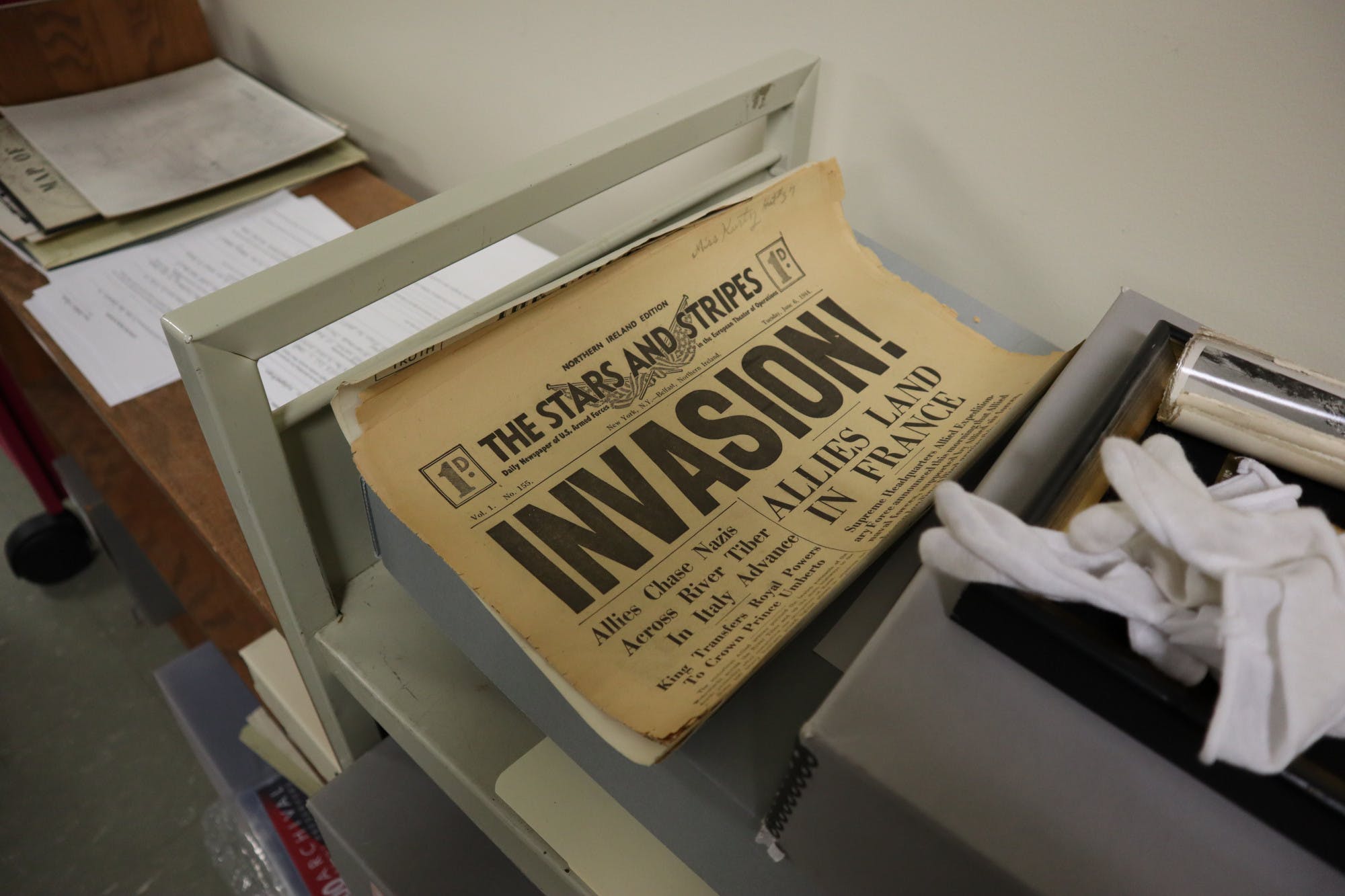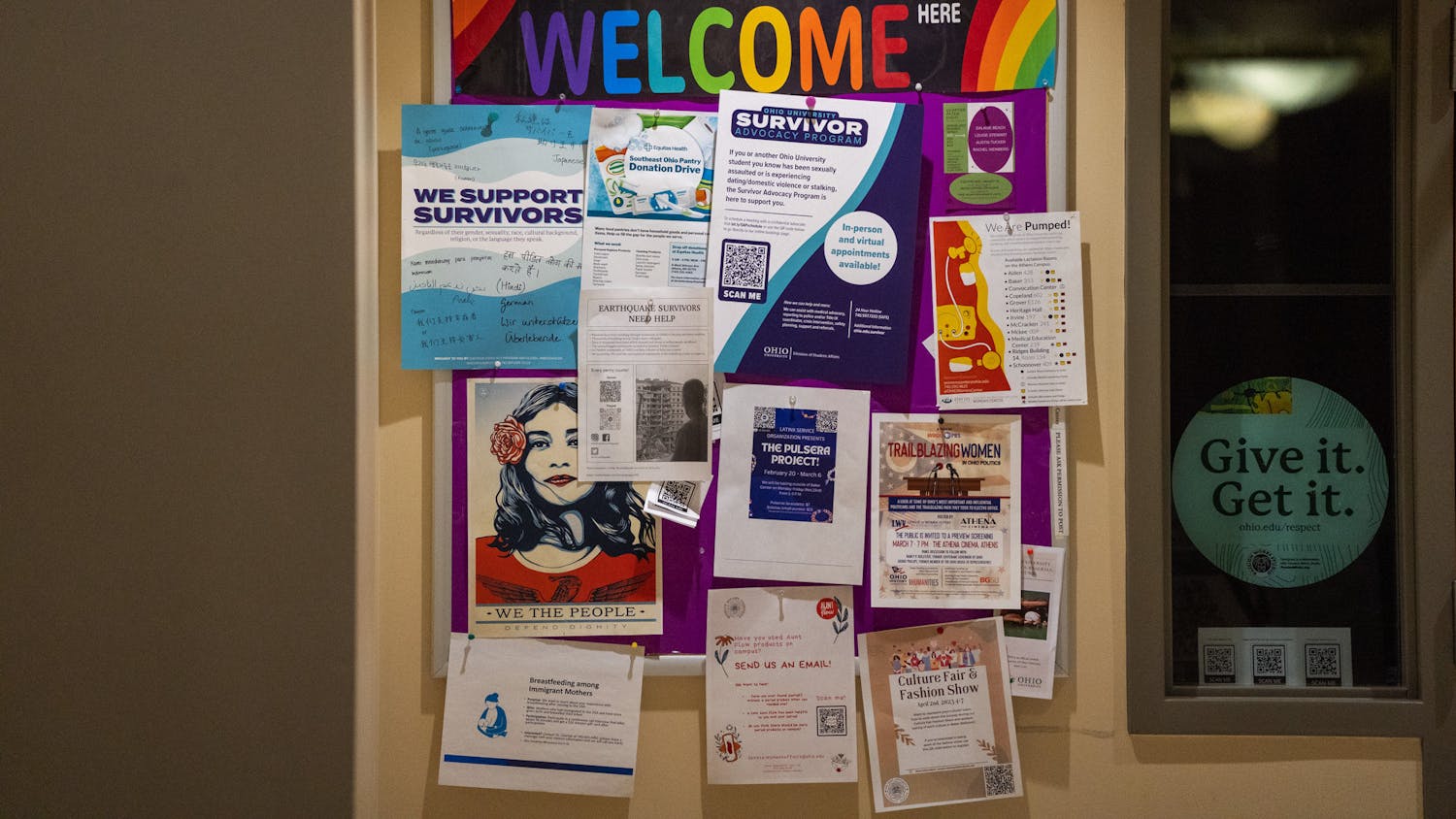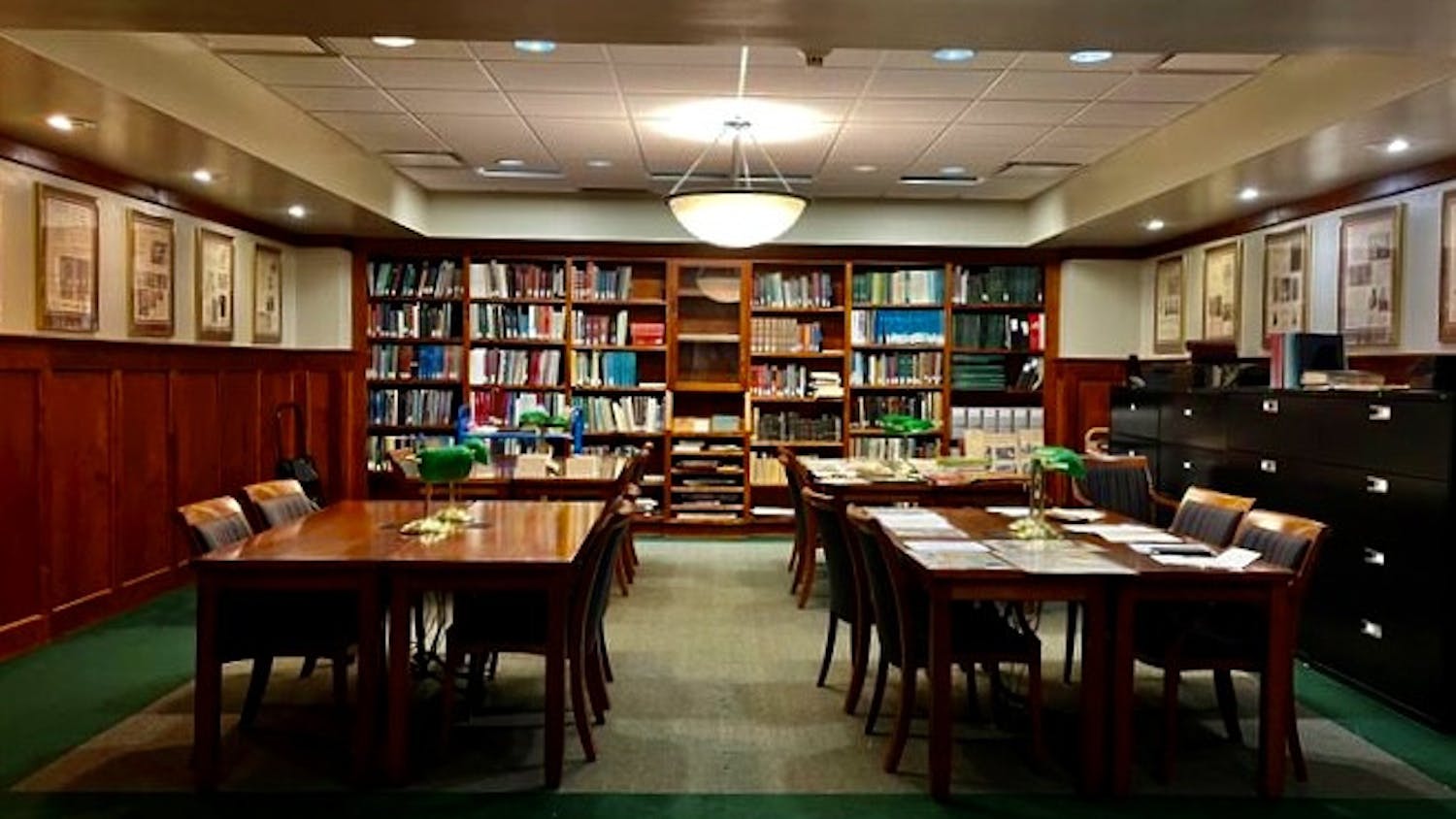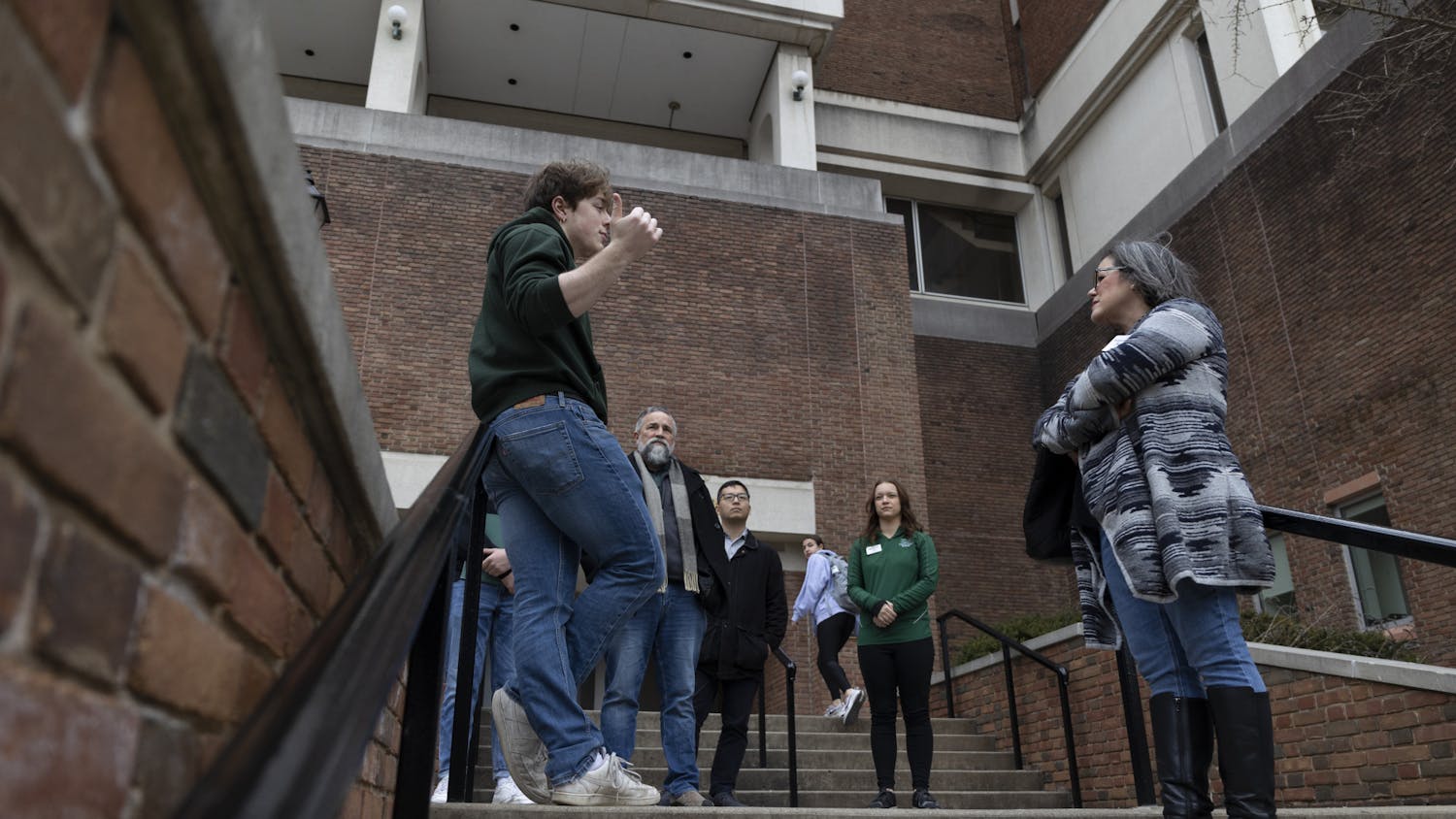If visitors don’t flock to Ohio University for its beautiful campus or small town charm, often people are driving out of their way to Athens to get a peak at a unique piece of history: Hitler’s urinal.
The Mahn Center on the fifth floor of Alden Library is home to this piece of porcelain, although there is some contest as to whether or not the artifact is authentic. The story goes that the piece of stone was taken from Adolf Hitler’s bunker in Poland called “the Wolf’s Lair,” really a series of concrete bunkers in the woods. It was from here that Hitler made a number of atrocious decisions during World War II and planned unthinkable evils during his over 800 days in this space.
The slab of stone is said to have come from that place by Walter Cronkite, perhaps best known for his 19 years as the anchor of CBS Evening News. Prior to his on-air job, he worked as a reporter on the battlefields of World War II. Cronkite worked alongside a number of fellow journalists, including Cornelius Ryan. When Cronkite was unable to attend Ryan’s 50th birthday, he sent him the supposed piece of the urinal with a note.
“This section of tile was removed by me on a post-war visit to the Wolf’s Lair,” Cronkite wrote in the note. “It seems appropriate that this memento of perhaps the only happy moments the Fuehrer spent in his declining days should reside with you, one of the great historians of that great war.”

Ryan, who famously authored books such as “The Longest Day” about D-Day in World War II, had close ties to the E. W. Scripps School of Journalism at OU. After his passing in 1974 due to cancer, his wife, Kathryn Morgan, donated his collection of historical materials and personal items to Alden Library, including the slab from Cronkite.
Cronkite was famously known as “the most trusted man in America,” but this story may very well be false.
“Cronkite was rather known as a practical jokester, and the humor of saying Hitler stood here and a piece of ceramic tile being mounted to a wooden plaque is very clear,” Alex Hines, a junior studying history and the museum exhibition assistant for the Ryan Room said. “The only thing saying that this is exactly what it is is on this letter from Cronkite. So there's a bit of skepticism behind it.”
Although there is limited proof regarding this particular artifact, there are heaps of verified historical items in the Ryan Room. The space contains thousands of questionnaires Ryan collected regarding experiences at D-Day, artifacts from the war and even Hideki Tojo’s cigarette case, the Japanese minister of war from 1940-1941 and later Japanese prime minister through 1944.
“There’s a huge wealth of information,” Greta Suiter, the manuscripts archivist for the Mahn Center, said.
The questionnaires within the collection include personal accounts of D-Day with a side of the event one cannot see in “Saving Private Ryan.” Written in multiple languages from all perspectives of the war, they provide a personal look into the Normandy invasion.
“The questionnaires truly show a very human side to the heroes who fought in this conflict as well,” Hines said. “You see exactly who these people were, and we have many examples of quotes from these people. They're just like you or I, some of them are our age or even younger, and they were ordinary people who were thrust into this massive conflict.”
While Ryan attempted to get some humorous experiences out of the questionnaires too, many of the accounts can be difficult to read. More than 4,000 Allied soldiers were killed in the Normandy invasion, with thousands more missing or wounded.
“My company commander, Captain Fitzgerald, was shot through the left lung,” one account from 2nd Lieutenant Schmid of the 101st Airborne read. “Fitz was so close to death that the doctor gave him a shot of whiskey because he knew Fitz was going to die. However, 40 days later Fitz walked into our barracks back in England with a nurse on his arm.”

Many more accounts discuss death or unimaginable injuries, and there are photographs within the collection that may be similarly difficult to view. Having these accounts, however, is a remarkable resource available to anyone interested.
There are also questionnaires from people who were in Market Garden, an airborne attack on northern Germany involving thousands of parachuters leaping from planes.
“Learning about the paragliders, or the gliders, for me was a huge, eye-opening thing,” Suiter said. “I didn't realize how many there were. I mean to throw yourself out of a plane like that, it's really heroic and courageous and incredible.”
Currently, the Ryan Room is under reorganization, but Hines and Suiter hope to have it open again to the public by the end of this semester, and certainly by June 6, the anniversary of D-Day. The pair also said they are open to drop-ins, particularly on Fridays, when they can bring out materials if they have the time for visitors to view. Until the exhibit is officially reopened, interested parties can track the progress of the redesign at the Mahn Center blog.
“It really hasn’t been touched since the early ‘80s,” Suiter said of the Ryan Room. “It’s more about the relationships they had and also how they did the work under these circumstances.”
The updated collection will also feature information about some women who were war correspondents, as well as some information about what occurred in Athens during the war. Part of this newly organized collection will include several artifacts from the Southeast Ohio History Center.
While many people stop by the Mahn Center to see the rumor of Hitler’s urinal, Hines and Suiter hope people are able to take something larger away from the vast collection. Hines said the collection is here because of personal relationships between reporters and influential people, and both historians agreed there is much to be learned from the information kept here at OU.
“Anyone interested in history, interested in World War II, interested in seeing artifacts from the time, people's voices from the time and then learning about not just what was happening overseas, but learning about what was happening here could be very interesting,” Suiter said. “It’s not just random that it’s here, there’s a reason and connections and friendships behind it.”
Editor-in-Chief





